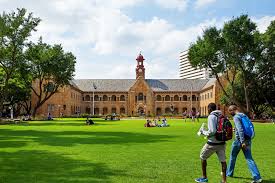University of Pretoria: UP commemorates World AIDS Day with Paper Prayer exhibition
The University of Pretoria’s (UP) Centre for Sexualities, AIDS & Gender (CSA&G) and UP Archives recently observed World AIDS Day, designated on 1 December, with a Paper Prayer exhibition hosted in the glass foyer of UP’s Musaion.
The event exhibited paper-based artworks with various messages embedded in them. The concept originates from an ancient Japanese custom of offering painted strips of paper as prayers for healing.
The Paper Prayer campaign was initiated in 1997 as an HIV awareness and advocacy campaign by Johannesburg-based art gallery Artist Proof Studio in partnership with the Department of Arts and Culture and a coalition of NGOs working in the field. Several HIV awareness workshops and printmaking workshops were offered at the time, with the works being exhibited on World AIDS Days at a site in every province around the country.
“This World AIDs Day, we are talking about 40 years of memory,” said UP Vice-Chancellor and Principal Professor Tawana Kupe in his address to attendees of the event. “We are remembering all the people we know among our staff and students who are living with HIV and AIDS, accessing good treatments and medical care, getting support and counselling from their colleagues, and living with HIV in ways that those of us who are not can never imagine.
“Furthermore, we remember staff and students who have died from AIDS-related complications, or our friends and colleagues who have lost family members to AIDS. We have, we hope, created an institution where people feel safe to talk about HIV and AIDS, their fears of living with HIV and their concern for acceptance, and where we can see an end to stigma.”
Paper prayer workshops became a tradition at the Artist Proof Studio every World AIDS Day, and was subsequently adapted to extend to other prevalent issues in South Africa such as gender-based violence, teen pregnancy, gender advocacy, xenophobia and conflict. The practice of using art as a creative response to healing and well-being is powerful, as it promotes visual messages of hope as well as activism in that participants are able to see themselves as part of the solution.
Mary Crewe, Director of the CSA&G, said one of the most powerful HIV-AIDS memorials is the AIDS Memorial Quilt, an elaborate tapestry conceived by AIDS activists in San Francisco, US. “The quilt was started to remember those who had died from AIDS,” Crewe explained. “AIDS was a complete rupture in the fabric and thread of society. The quilt offered a means of interweaving the political and the therapeutic by combining a process of mourning with interactive interventions by naming individuals on the panels and incorporating them into a larger fabric. The quilt integrates a personal into a public memory.”
The exhibition was attended by South African artist and Executive Director of the Artist Proof Studio Kim Berman, who explained that the catalyst for the Paper Prayer campaign was an HIV-AIDS exhibition in a Johannesburg art gallery that she had attended in the 1990s after her return from the UK. “We then went to the then Department of Arts, Science and Technology and suggested that the exhibition become a national campaign,” she said. “We wanted to offer an opportunity to people to engage with the stigma [of HIV and AIDS] through artwork.”
Activist Charmaine Tagwana, who used to volunteer at the CSA&G when she was a UP student, took to the podium to stress that understanding the stories of HIV-positive people matter and that a safe space must be provided for people’s vulnerability. “It is an honour for someone to trust you with their story; that is something I do not take for granted,” she said.

